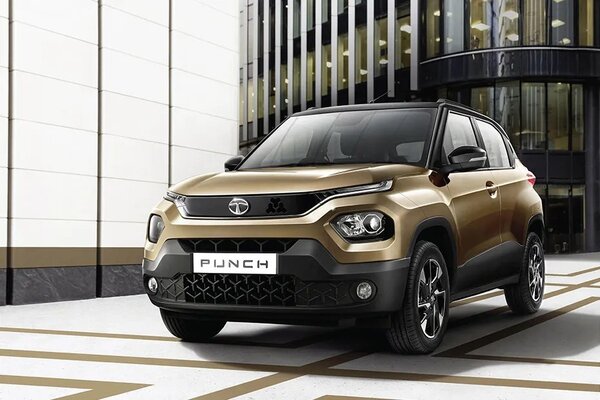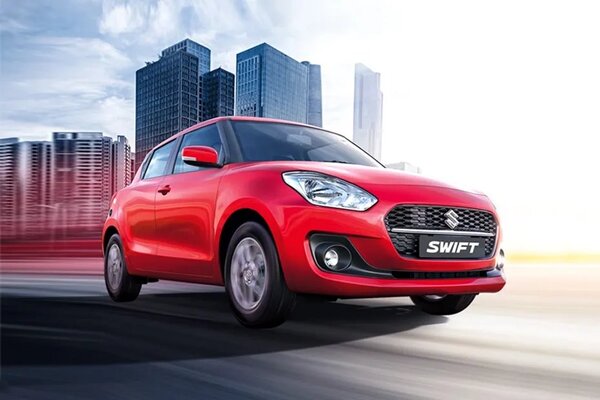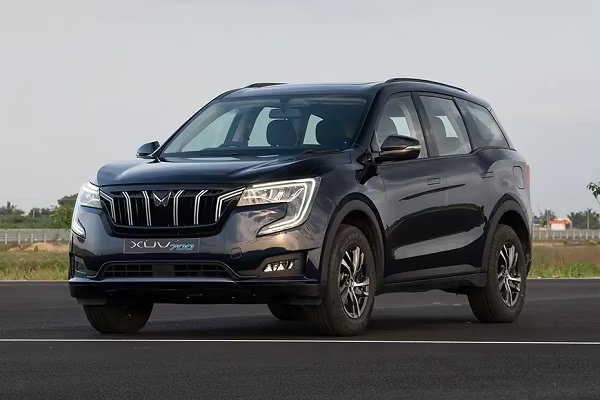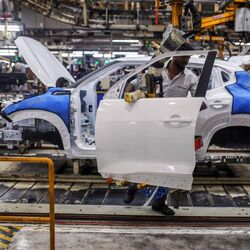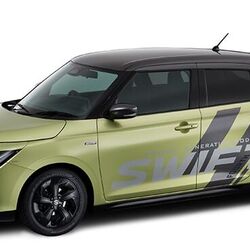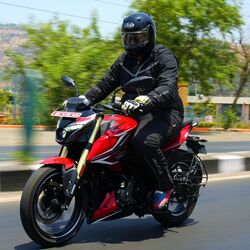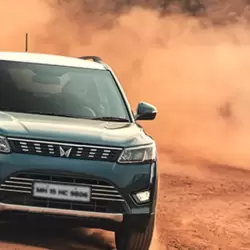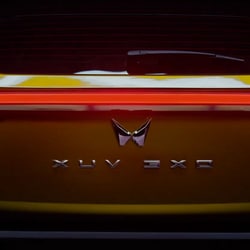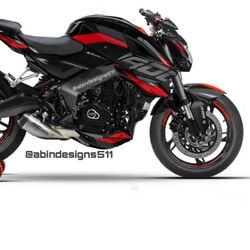BMW 7-series


The new 7 Series is BMW's bid to prove its engineering superiority over Mercedes and Audi. What you get as a result is a car that's bristling with tricks and tech.
Let's face it. Not many can afford BMW's spanking-new flagship. The company reckons that it will sell around 300 copies of the all-new 7 Series in India every year, which is an insignificant number in a country that sells well over a million cars. The real significance of the 7 Series lies in its reputation to move the goalposts, to create such an impact that shakes the very foundation of the premium luxury car market. And not all of it in a good way, if history is anything to go by.
Trending Cars
The previous 7 Series was born in a sea of controversy. It was the first BMW to wear design chief Chris Bangle's flame-surfaced design which was abhorred by many. The interiors too earned notoriety by way of the iDrive, the prominent aluminium wheel on the centre console that controlled key functions by a simple twirl and a push. Only it wasn't so simple and it could take a lifetime to master the novel but frustrating system.
But while the 7 Series looks and iDrive were lambasted by all and sundry, competitors quietly copied and improved the concept. The 7 Series 'bustle-back' boot with a raised lid has spawned improvisations that can be seen on the Merc S-Class to the Toyota Camry and even the mundane Swift Dzire. The iDrive too has been offered in a more simplified form in Audis and Mercs, with a different tag of course. And to drive home BMW's (and especially Bangle's) 'I told you so' point further, the previous 7 Series has been BMW's best-selling flagship to date.
So now when its successor, the fifth-generation 7 Series comes, everyone and Mercedes and Audi in particular have to sit up and take notice. This time around, the styling is tamed down and a clear indication that BMW wants to steer clear of the controversy stirred up by the outgoing Seven. The body lines are smoother and the surfaces more flat and taut than before, giving this big saloon a less fussy look. BMW has returned to a conventional boot (the shut lines are on top instead of the sides) which looks more cohesive while the strong shoulder line adds to the car's muscular character.
The front of the new Seven with its 'soft-nose' is sure to divide opinion, the upright and even larger-than-before kidney grille looking a touch out of proportion. Pedestrian safety norms which demand high bonnets for cars seriously disturb a car's styling and proportions and the 7 Series with its bulbous front end shows that designers haven't been able to overcome this problem.
But the questionable looking front end notwithstanding, the new Seven is indeed a very handsome, well proportioned car with superb detailing that just reeks of class.
While BMW may have been relatively conservative with the styling, no punches have been pulled under the new skin. Befitting its flagship status, the new 7 Series is packed with cutting-edge gizmos and this car is a strong push from BMW to establish its technological superiority over arch rivals like the A8 and S-Class which had fast caught up with the previous Seven.
There are lots of clever tricks in the 7 Series arsenal, many of which are an industry first. Features like the heads-up display and radar-assisted cruise control are now common but the unique night vision system which uses thermal imaging to allow you to 'see' people and animals unlit in the dark comes as a boon for treacherous Indian highways. Less useful for us is the lane change warning system which relies on lane markers to inform you when you stray into an adjacent lane by vibrating the steering wheel. The way your finger tips are massaged is a nice little touch but in India, the lack of lane markings would make this system redundant! Also, a first is internet connectivity on the move, which I am sure would be a huge plus for net-savvy Indian CEOs.
The big news is the return of four-wheel steering (4WS), which is finding its way back into cars. Below 55kph, the rear wheels turn in the opposite direction to the front pair to improve maneuverability while above that speed the rear wheels turn in the same direction (by not more than three degrees) for sharper cornering and quick lane changing. The strange steering feel that dogged previous versions of 4WS have been taken care of by more powerful electronics which induce a more natural feel. In fact, the 7 Series uses FlexRay high-speed data transmission technology which is 20 times faster than conventional systems. The advantage is that communication between the electronic dampers, steering and other systems of the car is lightning quick and that to the driver means a consistent and linear driving feel.
Though the hardware that powers the new Seven is straight out of a Bond movie, to access all the tech is not so difficult, thanks to a cabin which is better laid out and the ergonomics vastly improved. The iDrive controller is simplified and less daunting to use than before. Like the Audi MMI system, the control wheel is surrounded by a cluster of four switches for easy access to each sub-system.
The cobbled roads of Dresden immediately highlighted the superlative low-speed ride quality of the 7 Series and this in India will surely be one of the car's biggest strengths. Unlike the hard-edged ride of most German cars, this big saloon feels like it is riding on a pillow of air, absorbing sharp edges like the cobbled blocks and tram rails with absorbent ease. I glanced at the dash and saw that the suspension was in 'Comfort' mode, which will probably be the default setting back home, but switch to 'Sport' or 'Sport Plus' mode and the 7 Series transforms itself from a limo to a sporting saloon. The Seven's agility on the twisty country roads in eastern Germany was astonishing, the phenomenal body control and eagerness to dart into corners at odds with its five-plus metre length and two-tonne weight. Sadly, there will be few roads in India to seriously enjoy the full dynamic capability of this car and we really can't see owners seeking out those few good roads that exist.
Most will repose at the back where there are enough toys to keep owners pampered in supreme comfort. Large screens behind the front seats means passengers can individually watch movies, all controlled by a parallel iDrive controller that sits in the centre armrest. There's loads of legroom, especially in the 750Li, the long wheelbase version, which will be the first to come to India.
Powering the 750Li is a creamy 4.4-litre twin-turbo V8 petrol which belts out 407bhp. BMW is proud of this motor's compact design which was achieved by placing the two turbos inside the vee. This unit isn't as free-revving as the previous naturally-aspirated motors but there's a nice linear shove of torque that begins fairly low down the rev band. On the derestricted motorway, it was easy to find the car's top speed which is limited to 250kph.
The six-speed auto transmission works well but there is some occasional jerkiness which spoils the calm of the cabin. There's a fair amount of wind noise too above 140kph and in terms of ultimate refinement the Seven loses out to cars like the S-Class.
For India, it's the 730d coming a few months after the 750Li that's the one to go for. The 3-litre, straight-six turbo-diesel produces a more than adequate 245bhp but it's the tidal wave of torque, a massive 55kgm, that makes it feel quicker than it actually is. The potent mid-range makes light work of overtaking on narrow country roads with minimal fuss and minimal revs. The diesel is refined too, something you now expect from a modern motor but at high revs it sounds a touch gruff and doesn't have the ultimate quietness of an S320 CDI.
But that apart, the new Seven has the measure of the Merc, be it in looks, equipment or interior space. It's not as calm to drive but strikes a superb balance between entertainment behind the wheel and behind the driver's seat. Now all you need to is forget about the global recession and find around a crore to pick up one up when it enters showrooms in March 2009.
Fact File
Price Range (in lakhs)*
Ex-showroom price 119.82-9.34 lakh (On-road price Mumbai)
Dimensions
Length 5212 mm
Width 1902 mm
Height 1478 mm
Chassis & Body
Weight 1980/1865 kg







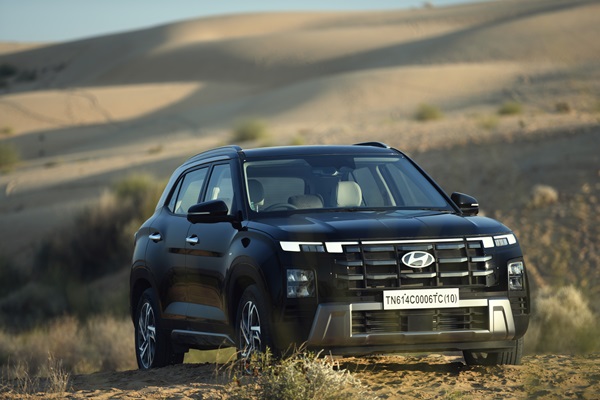
 1497 cc
1497 cc Multiple
Multiple
